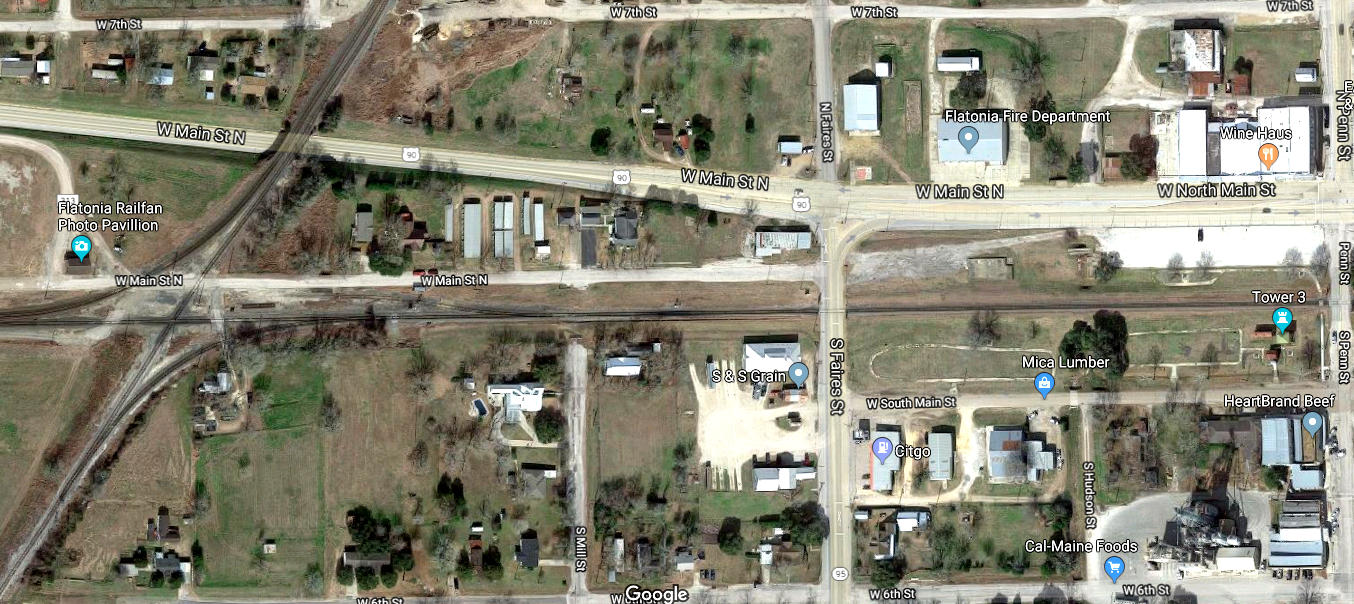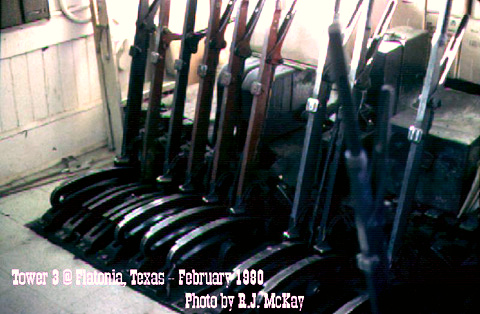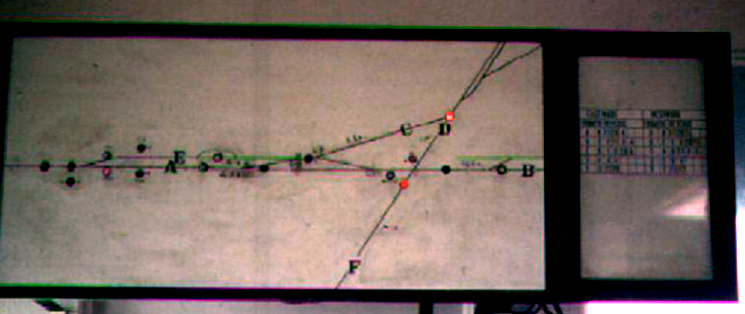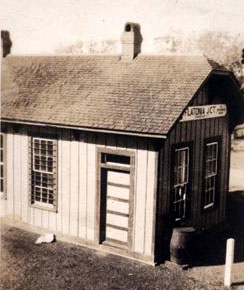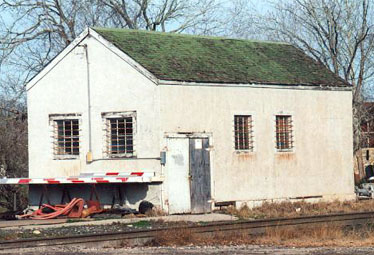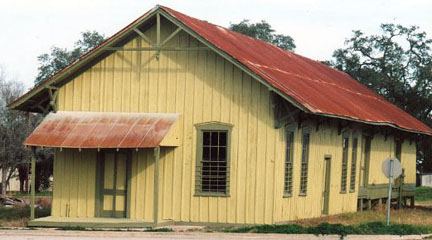Texas Railroad History - Tower 3 - Flatonia
A Crossing of the San Antonio & Aransas Pass
Railway and the Galveston, Harrisburg & San Antonio Railway
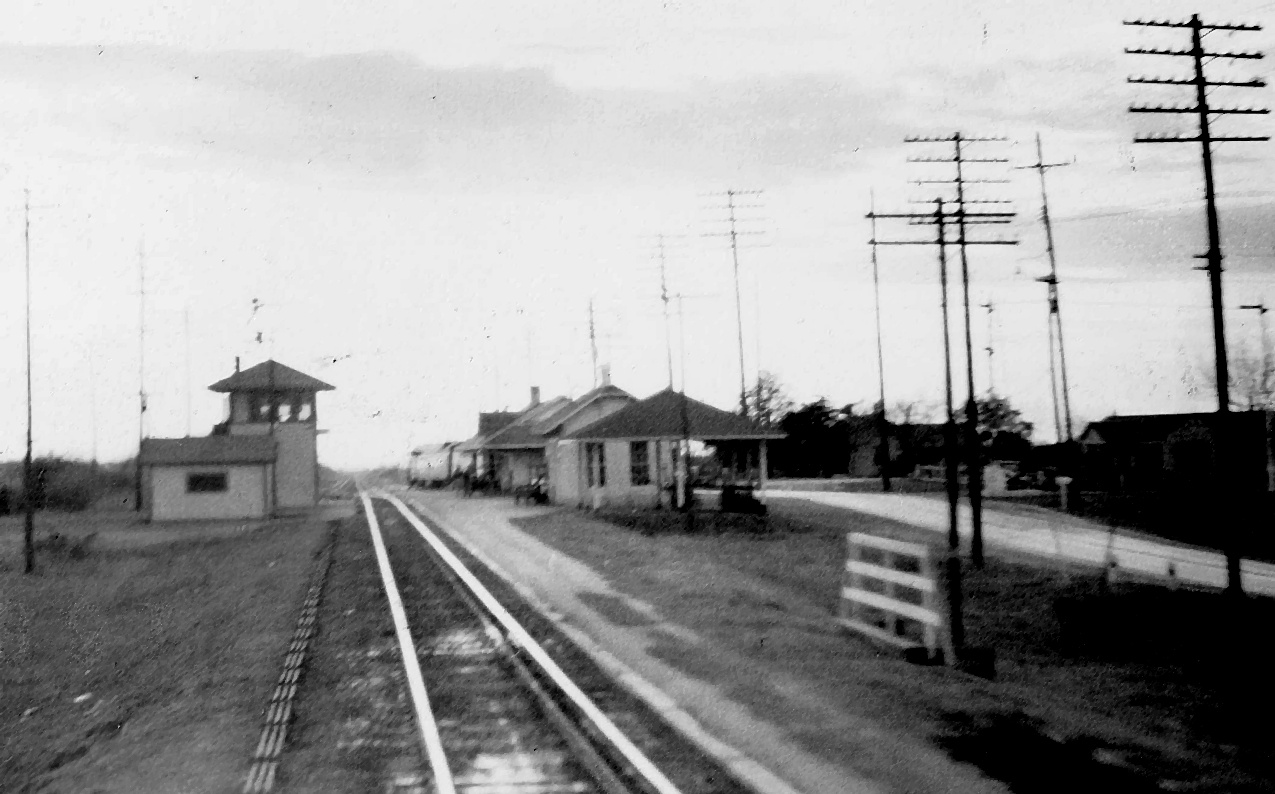
Above:
Facing west along the Galveston, Harrisburg & San Antonio tracks, John W Barriger III took this photo from the rear of his
business car as his train passed Tower 3 traveling to Houston, likely in the
1930s. (John W Barriger III National Railroad Library.)
Prior to the Civil War, the Buffalo Bayou, Brazos and Colorado
(BBB&C) Railroad built westward from Harrisburg to Alleyton,
a town on the east bank of the Colorado River near Columbus. After
the war, the BBB&C bridged the river but proceeded no further
due to financial problems. In 1868, the BBB&C was sold to
various investors to pay off construction debts and other judgments.
In 1870, it was re-sold and then reorganized by Thomas Peirce
who amended the charter and renamed it the Galveston, Harrisburg
and San Antonio (GH&SA) Railway. In 1873, the GH&SA resumed
construction westward toward San Antonio, passing near an existing
settlement known as Flatonia. The citizens of Flatonia moved their
houses and businesses one mile northwest to the GH&SA tracks
and the new town was incorporated in 1875. Two years later, the San Antonio & Aransas Pass (SA&AP) Railway
began a northerly expansion out of its original south Texas territory by
constructing a line north from Yoakum toward Waco. The tracks crossed
the GH&SA at Flatonia. To control this junction, Tower 3 was authorized for operation by the
Railroad Commission of Texas (RCT) on October 9, 1902.
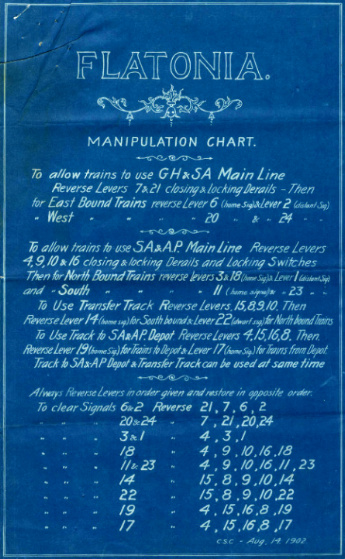

Above: These images supplied
by DeGolyer Library, Southern Methodist University, show the "Manipulation
Chart" and the "Lock and Dog Sheets" for the interlocker control levers in Tower
3 as of August 14, 1902, two months before the tower became operational. These
drawings would have been incorporated into operator training materials, and were
probably posted somewhere inside the tower near the levers. Operating a 24-lever
manual interlocker was a non-trivial endeavor.
Southern Pacific (SP) had acquired the GH&SA in
1881 as
part of its plan to develop a southern transcontinental route, ultimately
known as the Sunset Route. SP saw increasing freight
traffic between the midwest and Los Angeles, but trains originating in Memphis
or St. Louis had to go south all the way to Houston before turning west
on the Sunset Route toward San Antonio and Los Angeles. SP sought a way to
shorten this route and to avoid the traffic bottleneck in Houston. The solution
involved the SA&AP tracks into Flatonia. Approximately 40 miles north of Tower 3, the SA&AP
went through the town of Giddings. In 1914, SP's Houston & Texas Central (H&TC)
railroad built 39 miles between Giddings and the Brazos River, and bridged the
river into Stone City on the east bank. SP also acquired the Hearne & Brazos
Valley (H&BV) Railroad, a short line that ran 16 miles from Stone City to
Hearne. Since Hearne was a major junction on H&TC's
Dallas / Houston main line, trains
leaving Dallas for San Antonio and points west no longer needed to go all the way
south to Houston
to reach the Sunset Route. Instead, this new Dallas - San Antonio ("Dalsa") Cutoff allowed
southbound trains to veer southwest at Hearne to Stone City, cross the Brazos
River, travel 39 miles to Giddings, and proceed south on the SA&AP to reach the Sunset Route at
Flatonia. Saving a full day versus transiting through Houston, the Dalsa
Cutoff via Tower 3 became SP's priority connection for fast trains between
the midwest and Los Angeles. Thwarted by legal proceedings
in an earlier attempt, SP finally acquired SA&AP in 1925. Today, all of these lines are under the ownership of Union
Pacific (UP) and they continue to see significant traffic through Flatonia and
the Dalsa Cutoff. Tower 3 was decommissioned in 1996 and relocated to a trackside
location in downtown Flatonia. Restoration activities began soon
thereafter and today, the tower is a historic showcase for the
town.
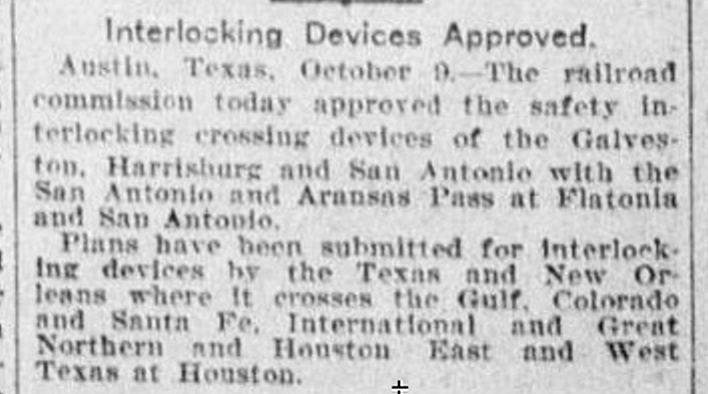
Houston Daily Post, October 10, 1902 |
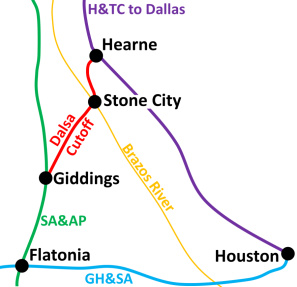 |
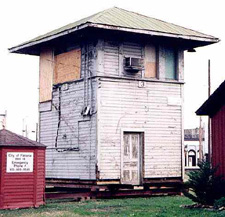
Tower 3 shortly after its relocation
(Bill King photo) |
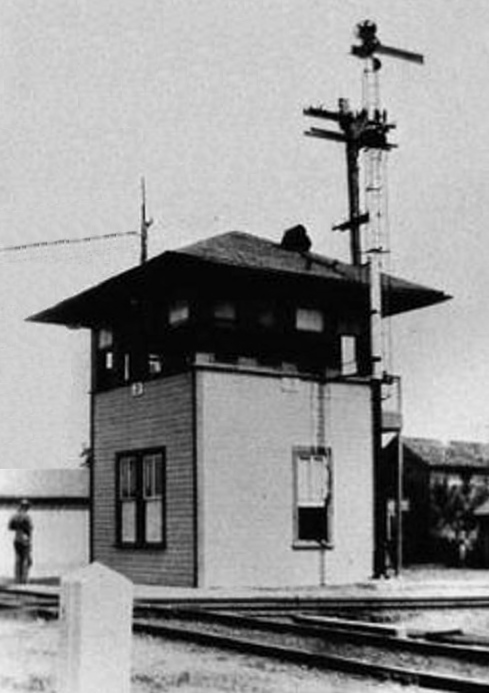 |
 |
|
Above: Tower 3 in 1945 (Chino Chapa collection) |
Above: Tower 3 was
relocated
to downtown Flatonia, adjacent to the former SP
main line. An extensive renovation
was
completed and now the tower
is open for public tours. (Google Street View, May 2016) |
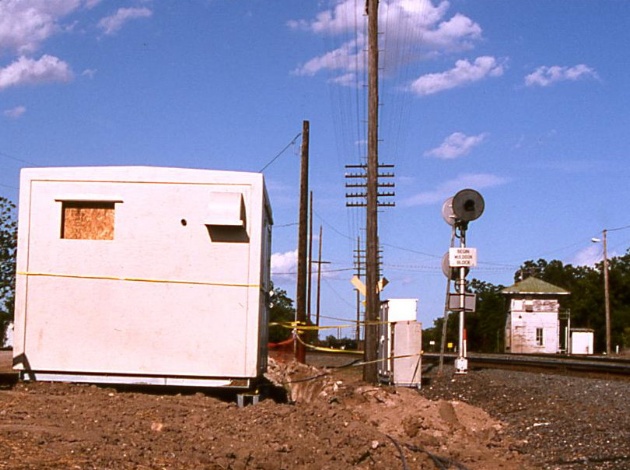 |
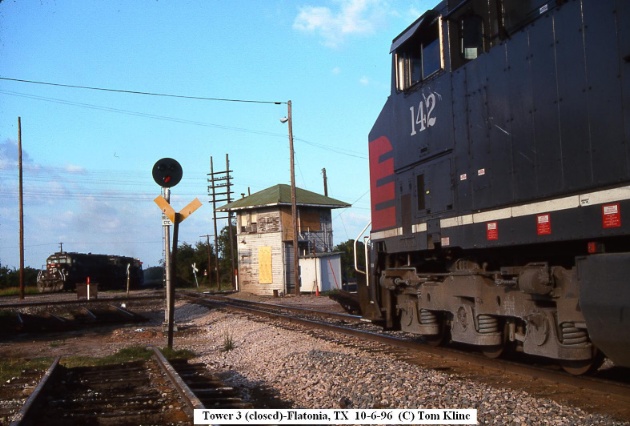 |
|
Above: A new interlocker equipment cabinet was installed at the Tower 3 crossing on
July 23, 1996.
(Tom Kline photo) |
Above: The Blue Streak
comes off the Dalsa Cutoff and onto the Sunset Route westbound past the
abandoned Tower 3 as
an empty northbound coal train holds short of the diamond. (Tom Kline photo) |
Below: four photos by R. J. McKay
 |
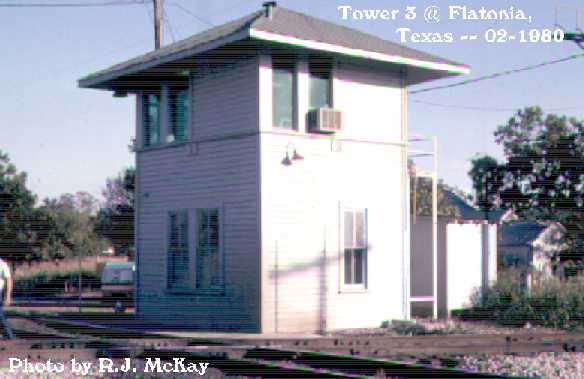 |
| Tower 3, 6/16/74 |
Tower 3, February 1980 |
Flatonia Rail Park Pavilion
| Right and
Below: October 2002 saw the opening of the Flatonia Rail Park
Pavilion near the original location of Tower 3. The new platform, which
is handicap accessible, is located on land owned by the City of
Flatonia and is diagonally across the diamond from the original site of
Tower 3. The Pavilion is close to the UP Sunset Route and Dalsa Cutoff, and is
covered, making it an excellent spot to watch trains in all weather.
(Tommy Schults photos.) |
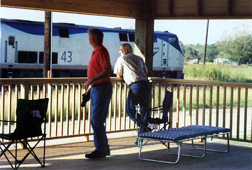 |
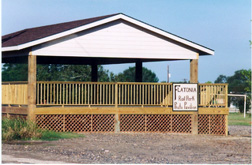 |
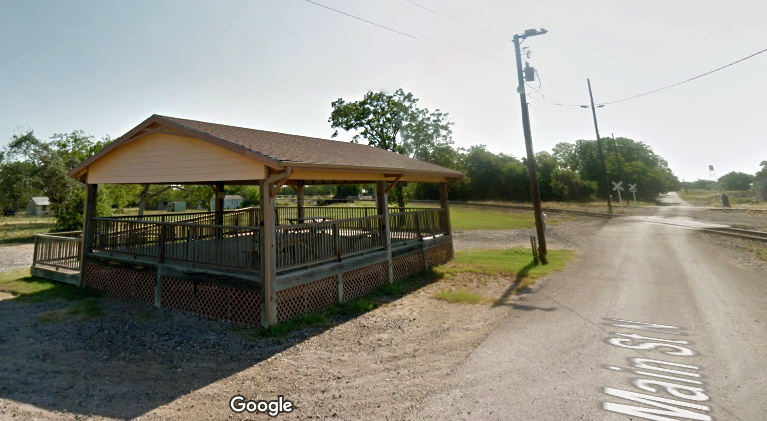
Above: The connection between
the Dalsa Cutoff and the Sunset Route crosses Main St. at grade adjacent to the
Pavilion. Behind the first grade crossing is a second one, for the SA&AP line from Yoakum to Giddings.
(Google Street View July, 2011)
Other Historic Railroad Structures in Flatonia (Tommy Shults photos)
|
the
SA&AP passenger depot (no longer standing) with the signboard "Flatonia Jct." on the end |
|
This is a newer vintage SA&AP passenger depot that was located a
short distance away from the diamond where Tower
3 once stood. It is no longer standing. |
|
This SA&AP freight depot in downtown
Flatonia was served by a rail spur off the main line. It is no longer
standing. |
|
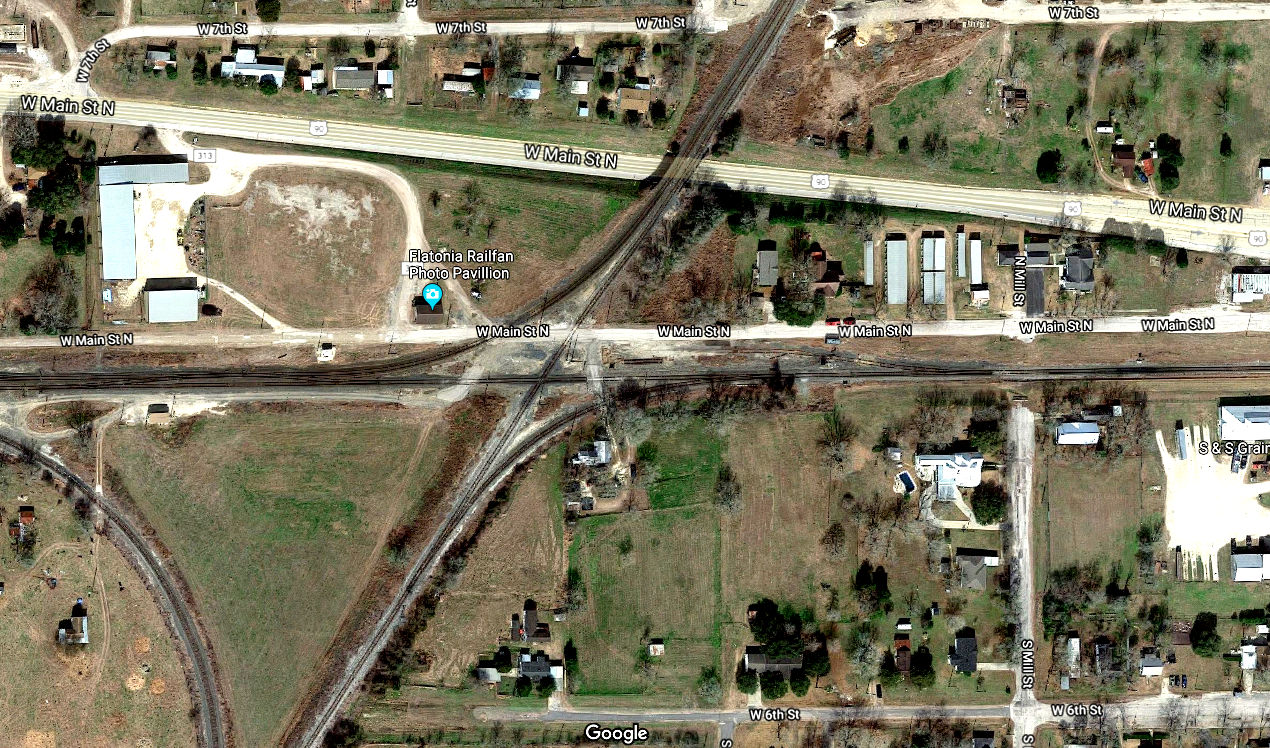
Above: The former GH&SA main line runs east / west
across this image of the Tower 3 site. The former SA&AP line crosses on a
generally NNE / SSW heading. The tower was in the southeast quadrant of the
diamond. Note the Flatonia Railfan Photo Pavilion marked on the northwest side
of the crossing (with "Pavillion" misspelled.)
Below: A slightly larger context shows the Tower 3 crossing at
far left and the location of the relocated Tower 3 structure marked with the
blue-green bubble at far right. The tower now sits 0.4 miles east of its former
location. (Google Earth)
